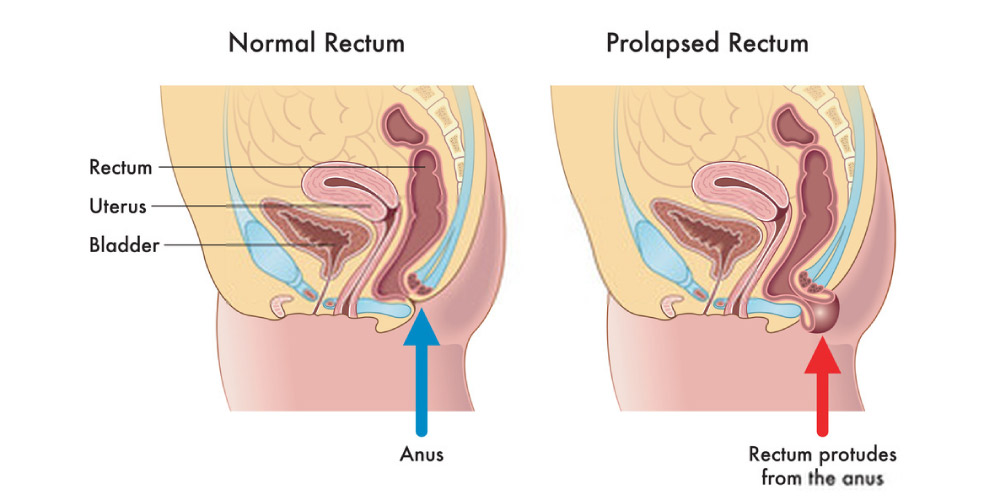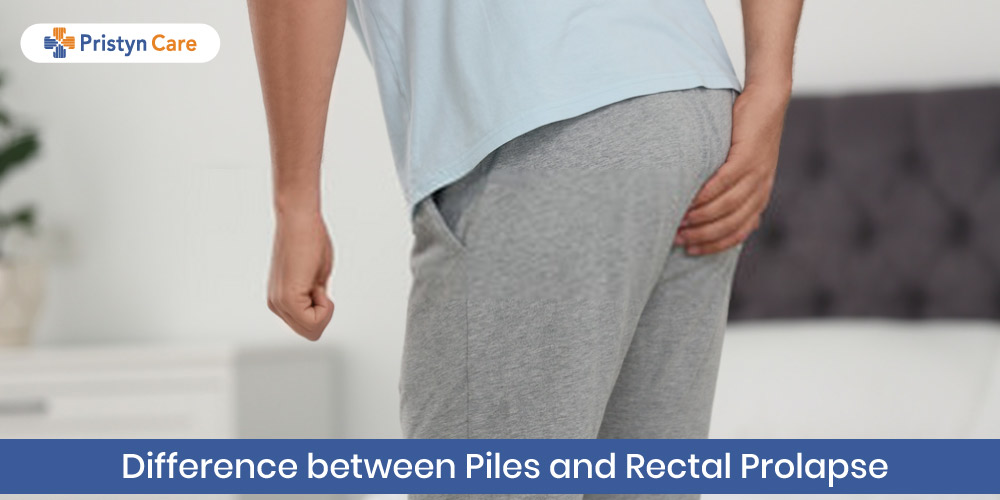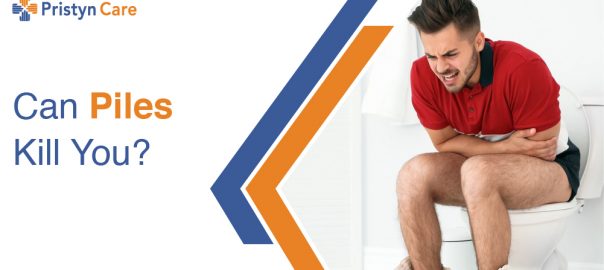![]() Views: 18,689
Views: 18,689
Difference Between Piles And Rectal Prolapse
We will see the basics about both and understand how these are different from each other.
Dedicated Support at Every Step!
Our Doctors are available 24 hours a day, 7 days a week to help you!
Table of Contents
How can you know if you have piles?
There is not much problem with detecting piles. Whenever you feel any strain in your rectum while emptying your bubbles, and if you also witness some blood while excreting then you may have the so-called unfortunate condition known as piles or hemorrhoids. (Also read: Anatomy of Colon and Rectum)
Causes of Piles:
There are many causes which can lead to this condition, in which some are in our control and some cannot be controlled. The cause of piles could be:
- Pregnancy: These commonly occur in pregnant women as enlargement of the uterus creates pressure on the veins in the colon. (Also read: Piles During Pregnancy)
- Aging: Hemorrhoids are most common in people aged between 45 to 65 years.
- Obesity: As a result of excess weight, pressure constrict the vein and blood vessels surrounding your anus and colon.
- Heavy lifting: Straining activities can lead to piles.
- Sitting for too long: Too much sitting applies too much pressure on the lower rectum.
- Chronic constipation: Sometimes if there is a rough movement of stool it can cause strain in the lining of the rectum. This is the most major and common cause.
- Anal intercourse: Rough anal sex can cause irritation in blood vessels and might result in hemorrhoids.
- Genetics: Sometimes it is also carried by the genes.
No Cost EMI, Hassle-free Insurance Approval
Rectal prolapse
In rectal prolapse, your rectum loses the normal attachments that keep it intact inside the body. This can have a very negative and embarrassing effect on the sufferer as it affects the daily chores and quality of life. The last part of the large intestine tends to slide out of the anal opening and mostly surgery is done to make it good.

Causes of Rectal Prolapse
Severe straining or constipation
Chronic constipation or chronic diarrhea will weaken your muscles naturally if persists. This can cause an inability to hold and control bowel movements.
Giving birth multiple times
In some recent studies, the problem of rectal prolapse is also linked with vaginal birth too many times. Though it can occur in men, women are seen mostly affected by it.
Weakened pelvic floor muscles
Due to weakened pelvic floor muscles, old aged people might usually find it difficult to hold stool and hence can experience leakage through the rectum. This is because the attachment if the rectum to the pelvic floor progressively weakens. (Also read: Why Pelvic Strengthening Exercises are important)
How will you differentiate between piles and rectal prolapse?
In many instances, the symptoms may seem to be quite similar associated with hemorrhoids and rectal prolapse. But these both are different problems requiring different solutions and treatment methods.
Some of the visible signs to establish a difference between piles and rectal prolapse are:
| Rectal Prolapse | Piles |
| Rectal prolapse is a condition where an entire segment of the bowel located higher up within the body is involved. | Hemorrhoids or piles only involve an inner lining and an inner layer of the bowel near the anal opening. |
| Rectal prolapse involves severe problems of incontinence or leakage of stool | Piles or hemorrhoids do not include this symptom. |
| Rectal prolapse is associated with a feeling of fullness in your bowels. | Piles are all about swelled painful lump in the anal passage. |
| Rectal prolapse involves the formation of prolapsed tissue that has concentric circles | Piles are strangulated veins and lump that can be extremely painful and uncomfortable. |
| Rectal prolapse is a complete case of prolapse where the rectum’s sleeve turns inside out and slides out of the anal opening. | Piles in its advanced stages will become more painful and complicated. |
Diagnosis:
- Rectal prolapse: It is diagnosed by examination. If the person feels that the protruding rectum goes inside as soon as he is done with the bowel movement, he has to bear down during the examination by the doctor to show prolapse in order to confirm the diagnosis. Tests may include ultrasound, special x-rays, anorectal manometry and many other numbers of tests if the person reports rectal bleeding. Younger people and children might have cystic fibrosis, so some tests may be run on them too if they report any such symptoms.
- Piles: Piles could be examined by two methods majorly- Digital and visual examination: Your doctor will insert a gloved and lubricated finger into your rectum to feel if there is any unusual growth or not. Sometimes internal hemorrhoids are too soft to be felt with bare fingers. In that case, your doctor might conduct some tests to examine the lower portion of your colon and rectum with a proctoscope, anoscope or sigmoidoscopy. Colonoscopy: During the colonoscopy, your doctor inserts a long flexible tube with a tiny camera on its tip inside your anus. This helps him to have a thorough view and examination of the inside of the entire colon. This is also preferable in case of risks associated or symptoms of colorectal cancer. (Also read: Bleeding piles - symptoms, Causes and Laser Treatment)
Treatment for rectal prolapse:
Laparotomy in which the surgeon uses a single, large cut in the abdomen to stop rectum prolapsing by lifting, pulling straight and stitching directly to the inner surface.
Laparoscopy involves inserting slender instruments inside through small incisions in the abdominal area. It is any day less invasive and less time consuming than the open surgery.
Treatment for piles:
Piles are best treated by advanced laser surgery for piles. Have you heard about piles laser treatment and how is it performed?
This procedure does not involve any cuts or wounds, unlike the traditional procedures. During laser treatment, laser energy is simply directed and delivered to the affected area which helps the hemorrhoidal nodes to shrink from inside. This helps in reducing the blood supply leading to abnormal growth of hemorrhoids. It is performed followed by negligible pain or bleeding. It also prevents recurrence and long hospital stays.
Take Away
This is just a piece of information about piles and rectal prolapse. But the first and foremost requirement is adopting a healthy lifestyle by amending the old rusty habits. This will not only protect you from rectal problems but will also lead you towards a happy and healthy life. Remember to eat high fiber food to keep the bowel problems at bay. Stay hydrated, drink plenty of water. Stop sitting on the toilet seat and straining for a long time. Try to avoid using the phone when you use the toilet as you end up wasting more time straining and inviting problems later. For the initial piles’ stage, home remedies including using topical creams, ingesting pain relievers, a warm bath and a sitz bath might help.
Above all, remember to contact a doctor if you see symptoms getting aggravated. Proper examination at the earliest will help you have a precise and effective treatment. You can contact Pristyn Care specialist and even make online consultation bookings for piles and rectal prolapse.
Also read: Rectal Infection and Their Results
Also read: When Piles Need Surgery










